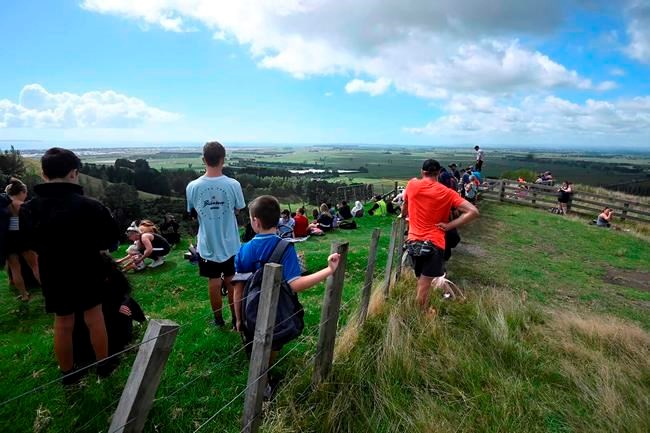WELLINGTON, New Zealand — One of the strongest earthquakes to hit the South Pacific in modern history triggered tsunami warnings across the ocean and forced thousands of people in New Zealand to evacuate coastal areas Friday. Small tsunami waves were seen, but little damage was apparent hours later.
The magnitude 8.1 quake in the Kermadec Islands region about 1,000
The tsunami threat caused traffic jams and some chaos in New Zealand as people scrambled to get to higher ground.
Residents recorded videos of small wave surges in some places, including at Tokomaru Bay near Gisborne. In the afternoon, the National Emergency Management Agency said the threat had passed and people could return to their homes, although they should continue avoiding beaches.
One of the earlier quakes hit much closer to New Zealand and awoke many people as they felt a long, rumbling shaking. “Hope everyone is ok out there,” New Zealand Prime Minister Jacinda Ardern wrote on Facebook during the night.
After the largest quake, civil
Emergency Management Minister Kiri Allan told reporters that people had followed the advisory.
“They felt the long or strong earthquakes and they knew to grab their bag and head into the highlands,” she said. “I can only thank and acknowledge the tireless efforts of the men and women from up and down the coast who knew how to act, when to act, and what to do.”
The Pacific Tsunami Warning Center cautioned the quake could cause tsunami waves of up to 3
Chilean authorities ordered people off beaches due to the potential for a tsunami along the nation's long coastline. Guatemala issued a tsunami alert, and authorities in El Salvador ordered people to take precautions in recreational activities. Mexico said there was no threat.
Waves of 30
The U.S. Geological Survey said the strongest quake was
Although the islands are uninhabited, New Zealand has built research and accommodation facilities there and often had scientists cycling through until the coronavirus hit last year and it halted the program. But a large group of more than 100 people including scientists and students was due to stay on the islands this week, until they were forced to cancel because of a virus lockdown in Auckland, said a spokesperson from the Department of Conservation.
The USGS said in a report that the quake occurred at the intersection of the Pacific and Australia tectonic plates and eclipsed the largest quake previously recorded along the fault line, a magnitude 8.0 in 1976.
It said the interaction between the plates creates one of the most seismically active regions in the world, and it has recorded 215 quakes there above magnitude 6.0 over the past century.
Jennifer Eccles, an earthquake expert at the University of Auckland, said the quake was at the top end of the scale for those involving only the Earth's ocean crust.
“This is about as big as it gets,” she said.
She said most quakes larger than magnitude 8.0 tend to occur when a section of more robust continental crust is involved.
The USGS said the magnitude 7.4 quake was likely a “foreshock” that contributed to the larger quake but that the first quake that hit closer to New Zealand was too far away in time and distance to have directly contributed.
The first quake was
It was widely felt in New Zealand, and residents in the major cities of Auckland, Wellington and Christchurch reported being shaken awake.
In 2011, a magnitude 6.3 quake hit the city of Christchurch, killing 185 people and destroying much of its downtown.
Nick Perry, The Associated Press



